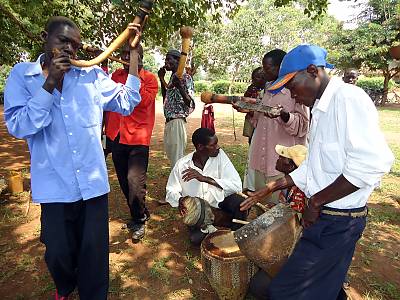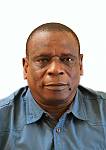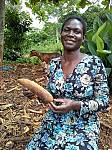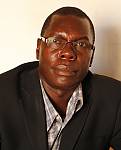
© James Isabirye, 2011
Ten years after being operational, the 2003 Convention’s efforts for promoting and safeguarding intangible cultural heritage continue. To date, the International Assistance mechanism of the Convention has supported over 50 safeguarding projects in 30 different countries, thus breathing life into the Convention by furthering endeavours on the ground. Community led involvement remains a central tenet to UNESCO’s operational understanding of intangible cultural heritage. Therefore, the dialogue session is presenting four International Assistance funded projects from Colombia, Mali, Uganda, and Vietnam to highlight the significance of practitioners and community members in safeguarding efforts. General Assembly participants are invited to witness the positive impact of International Assistance in diverse contexts.
Far from being static, intangible cultural heritage is alive, renewed and animated by communities, and ever necessary and relevant to contemporary society. The dialogue session is a unique opportunity to engage with the real actors who directed the projects, and a chance to hear the community member themselves give live testimonies on their experiences revitalizing and transmitting their heritage. The session also looks to foster open discussion across different generations, communities, and nations.
Projects and speakers
Colombia
Nelson ORTIZ, Advisor of environmental territorial ordering at Gaia Amazonas Foundation

© UNESCO
Advisor of environmental territorial ordering at Gaia Amazonas Foundation, Nelson Ortiz specializes in the design and implementation of local research programmes with indigenous peoples of the Colombian Amazon. He has been collaborating with indigenous and Afro-descendant community associations in Colombia for holistic territorial management for over twenty years.
Since 2002, he advised the Association of Captains and Traditional Indigenous Authorities of the Pirá Paraná River (ACAIPI) at Vaupés in preparing their Territorial and Environmental Plan. He coordinated the elaboration of the “Special Safeguarding Plan for the Hee Yaia Keti Oka Element”, as well as the nomination for the element’s inscription on the Representative List of Intangible Cultural Heritage of Colombia in 2009 and the Representative List of Intangible Cultural Heritage of Humanity in 2011. From 2017, he has been the coordinator of the ‘Safeguarding of the traditional knowledge for the protection of sacred natural sites in the territory of the Jaguars of Yuruparí, Vaupés Province’.
Tarcicio VANEGAS, Indigenous leader and cultural manager of the Itana- Yeba Masa ethnic group in the Association of Captains and Indigenous Authorities of the Pirá Paraná (ACAIPI).

© UNESCO
Tarcicio Vanegas, an indigenous leader and a Jaguar shaman of Yuruparí at Vaupés, Colombia, has endeavoured tirelessly to safeguard traditional knowledge and practices on the sacred sites of the river Comaña, a tributary of Pirá Paraná, long considered the ancestral territory of the Itana clan. For the ‘Safeguarding of the traditional knowledge for the protection of sacred natural sites in the territory of the Jaguars of Yuruparí, Vaupés Province’,Tarcicio undertook many roles, as researcher, translator, editor of cultural information, and local coordinator of the Itana ethnic group.
As a leader of the Itana-Yeba Masa group, Tarcicio has worked extensively with the Association of Captains and Indigenous Authorities of the Pirá Paraná (ACAIPI), since its creation in 1996. Since 2014, he is the Captain of his community, Santa Isabel del Comeña, where the Macuna, Itana and Magiña ethnic groups live together. Furthermore, in 2009-2014, Tarsicio worked as a teacher and director of the community school.
Mali
Lassana CISSE, Professionnel du patrimoine culturel du Mali

© UNESCO
Lassana Cissé is a professional of the cultural inheritance of Mali since 1979. He established and then managed the Cultural Mission of Bandiagara from 1994 to 2013. Lassana’s subsequent post was as the National Director of Cultural Heritage and National Coordinator of ‘Inventory of intangible cultural heritage in Mali with a view to its urgent safeguarding’.
Notably, Lassana was a member of the network of African experts of UNESCO for the 1972, 2003 and 2005 Conventions. Recently, he worked as a Senior Consultant of UNESCO on the PAST project in Haiti (January-March 2018), and was an expert facilitator for the revision of requests for emergency international assistance from Niger for the safeguarding of intangible cultural heritage in a context of crisis (June-July 2017). He is also the Vice President of ICOMOS-MALI and has been an independent expert in heritage since January 2017.
Uganda
Irene NABIRYE, Community leader from Nabitende

© UNESCO
Irene Nabirye joined the search for bigwala gourds in 2015 upon request from Nabitende community leaders. As part of the group to grow the first generation of gourds, she successfully mobilized and educated women from Kiwanhi, Butyabule, Bukakaire, Nabirere, Nabitende and Mawanga (her own village), about their role in bigwala.
Irene is inspired and active in rural women development and poverty eradication initiatives. She regards the invitation to speak at UNESCO as an exceptional achievement for herself, a woman from a rural, underprivileged background. As a child, Irene’s family could not afford her primary school education. Now as a young single mother of two girls and one boy, she educates and supports herself and her family through community associations. She is proud that her first born will matriculate to Kyambogo University in September 2018 to study microfinance.
James ISABIRYE, Executive Secretary of National Council of Folklorists of Uganda (NACOFU)

© UNESCO
Alongside Basoga communities, James Isabirye is training a new generation in bigwala, a set of five or more monotone gourd trumpets blown in hocket to produce a melody, accompanied by singing, drumming, and dancing. In his role as Executive Secretary of National Council of Folklorists of Uganda, a network of village based music and dance troupes, educationists, researchers, and other scholars, James advocates the practice, documentation, safeguarding, dissemination, and study of folklore and diverse cultural expressions of Uganda.
He is currently a doctoral student of Music Education at Oakland University, Rochester, Michigan, and also teaches Music in Uganda’s Kyambogo University. James has presented papers worldwide: North Carolina State University, and University of North Carolina, Chapel Hill (USA), Conferences of the International Council for Traditional Music in Fuzhou and Quanzhou (China) 2004, Sheffield (UK) 2005, and Shanghai (China) 2013, and the Conference on Education and Lifelong Learning at Kenyatta University, Nairobi (Kenya), 2015.